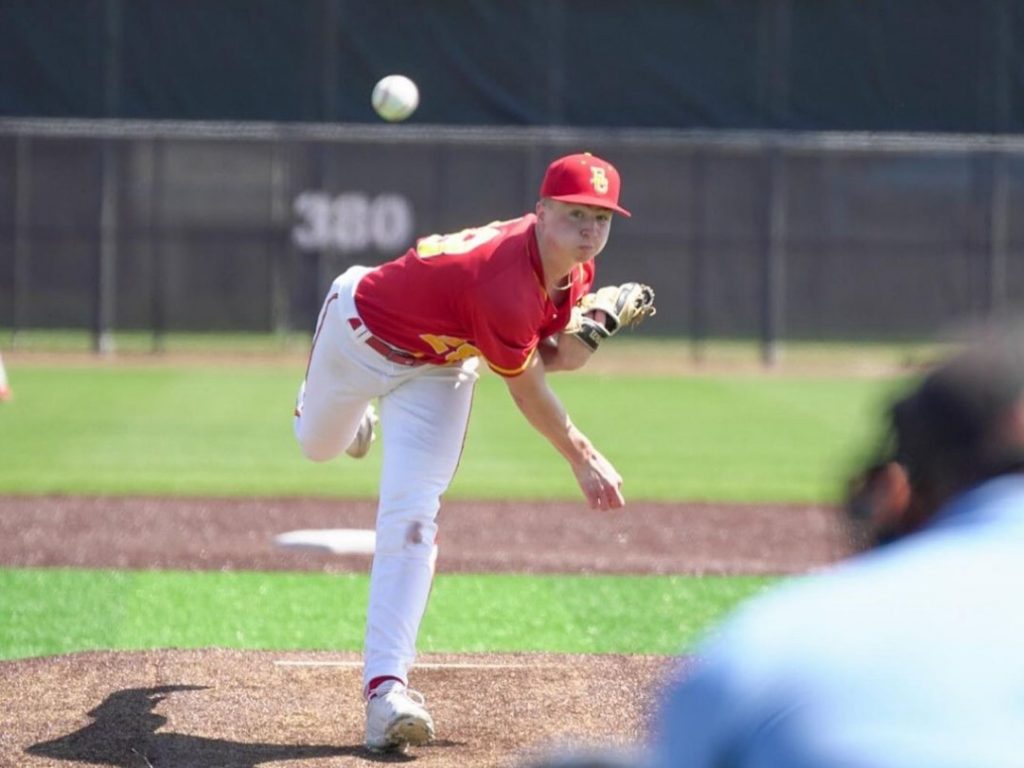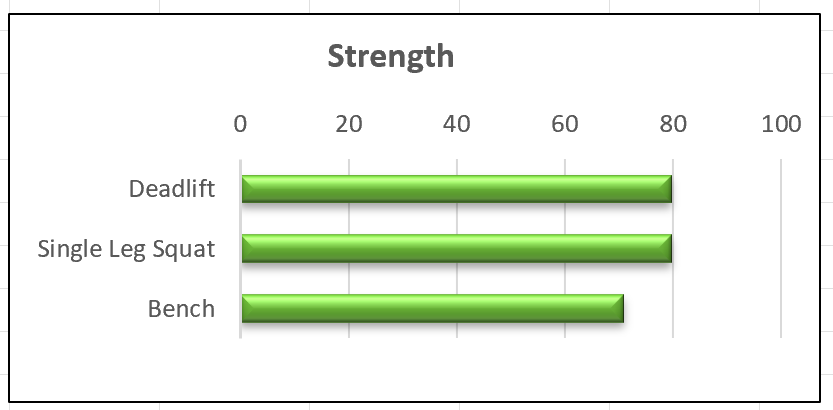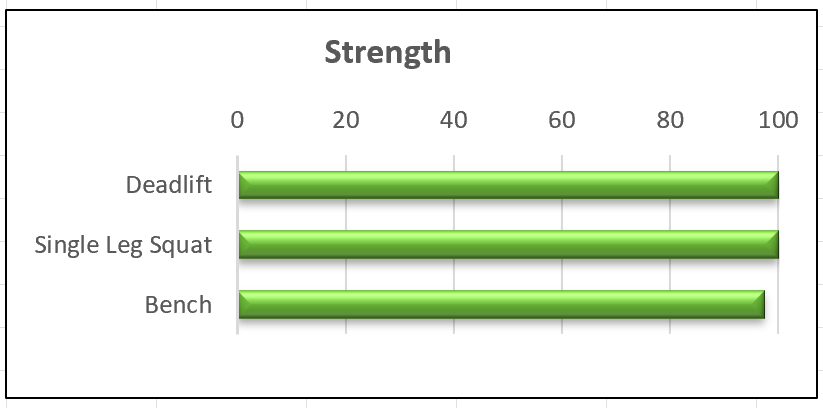
RHP Bourke Reid joined us last September to get an early start on his off-season training. The 6’3” righty came in weighing 173 lbs. having topped out at 80 mph on July 22nd last summer at a Perfect Game event. Fast forward to the end of the off-season, after packing on nearly 20 lbs. of lean muscle mass, Bourke is now touching 87 mph. And there is much more to come here. How did he do it?
Bourke’s off-season training began with a complete assessment, including a movement screen, strength and power testing, and a mechanical breakdown of his delivery, combining both motion capture and video analysis.
Every pitcher wants to throw harder and getting them to do so is based on targeting each athlete’s lowest hanging fruit. In Bourke’s case, several topics stood out during his baseline assessment. So, let’s review each in some detail.
Movement Screen / Mobility
The mobility portion of the assessment is crucial in not only documenting an athlete’s movement strategies, but detecting mobility roadblocks that may be limiting him from getting into more efficient positions on the mound. In many cases, some of the issues that are presented in this portion of the assessment will be evident when we are evaluating the pitcher’s mechanics in the latter part of the assessment.
Below are two issues we discovered during Bourke’s assessment:
Pec Minor + Lats: Both the pec minor and lats are internal rotators that if tight, can limit a pitcher’s ability to efficiently load their scap during the stride phase. This could also cause tension earlier in the throw, lessening momentum by restricting how effectively their arm is able to unravel through release which many times will present as a “push” with the elbow .
Hip Extension: We often see this disconnect with pitchers who fail to get a sufficient amount of front leg extension mostly due to the drive leg pushing or “vaulting” off the rubber aggressively, causing a crash on the front side and making it hard to absorb the force with the lead leg and go the other way with it.
Body Composition
One of the biggest game changers for Bourke this off-season was putting on additional lean muscle mass. Bourke walked in our doors last September at 173 lbs. At 6’3” and our target height to weight ratio of 2.5-2.7x, he needed to increase his mass by 15-20 lbs.
Often times, with new athletes, awareness is as much a part of gaining weight as anything else. We discussed this topic with Bourke several times and it obviously sunk in and paid off. Since September, has added nearly 20 pounds and he now is a strong 192 lbs., with still more room to fill in.
Strength and Power
Strength and power testing gives us more information about the type of athlete we have in front of us and higher gains in these two categories means a higher velocity ceiling with less having to be produced by the arm.
In Bourke’s case, we were able to retest his strength and power metrics from beginning to end of the offseason to compare his baseline numbers from the fall versus his recently tested numbers at the end of the winter.
Lower Half Power
-
-
- 23% increase in his CMJ Jump (6% above our average for our offseason athletes)
- 20% increase in his Squat Jump (3% above our average for our offseason athletes)
-
Strength
-
-
- 28% increase on his deadlift (12% above our average for our offseason athletes)
- 31% increase on his bench press (7% above our average for our offseason athletes)
-

September Testing

February Testing
Mechanical Delivery
The final part of Bourke’s assessment was his mechanical breakdown with motion capture and video analysis. The motion capture data is great with helping us uncover possible issues that may be difficult to see with the naked eye such as angular velocities.
Things he did well…
-
- Shoulders Level at Foot Plant: Bourke does a great job with landing in a powerful position with his shoulders level. Because his shoulders are neutral, this would mean he is not throwing what we refer to as “uphill” (throwing arm dipped lower than glove arm at foot plant) which sequences the upper and lower half at the right time as he goes into release.
- Lead Leg Foot Position at Foot Plant: A stable front foot at foot plant puts the pitcher in a great spot to clear his hips from foot plant into and through release. The front foot helps decelerate the body so, if the front foot is unstable, the pitcher may spin off, limiting how effectively he can better get out front and stay on the ball longer.
- Trunk Lateral Tilt Foot Plant to Release: This tilt puts the arm at a roughly 90-100 degree angle from the body. It’s not only this angle that is thought of as being the safest for both the shoulder and elbow, but the athlete’s ability to maintain this from layback to finish.
Things that needed work…
-
- Vaulting (back foot position): This is often a result of lack of glute engagement. When vaulting occurs, this causes the pitcher to apply more force vertically which diminishes the force they are able to apply linearly.
- Weight Shift (Drifting): Bourke lacked the ability to apply force in a linear direction as the drive phase begins. When we see pitchers who lack the ability to drift effectively, we see the pelvis and / or torso begin to rotate early which can compromise both command and velocity.
- Smooth Arm Path w/ Momentum: A pitcher with a looser arm will allow the arm to accelerate at the maximal velocity as opposed to muscling up early restricting how efficiently he can both load his scap and land with his arm flipped up on time at FP. A tense muscled up arm action can limit how much ER of the shoulder during the throw.
How We Addressed his Movement Deficiencies
Following the video analysis portion of the assessment, we generally prescribe throwing correctives in addition to his strength and mobility work to help improve overall movement patterns on the mound.
Below is a summary of Bourke’s movement drills to help address his deficiencies:
Toss-in Drill: Used to help create a more smooth and fluid arm path throughout delivery
Rocker Drill: Used to help keep the trunk stacked in order to fire the ball in a more stable position
Step Back Drill: Used to help shift a pitcher’s COM (drifting) and also anchor the back foot as weight is traveling down the mound
Step-Behind Drill: Used to help continue rotation around the front hip through release
Summary Results
Bourke came to RPP last fall with goals of improving his strength and velocity on the mound and he did just that. Initially topping out at 80 mph and currently up to 87 mph is a testament to his hard work and dedication this winter.
-
- Improving the tissue quality and tone in his hips and pec minor and lats, he was able to smoothen his arm path to help create a better “whip” with his upper half throughout his delivery
- Drifting and engaging his back foot later and more effectively allowed him to build more momentum going down the slope
- A significant increase in strength, power, and muscle mass put his body in the best position to throw substantially harder this spring
As he heads into his junior season with an improved athletic frame, added velocity, and smoother mechanics, we are all excited to see what the future holds for Bourke.
Best of luck big guy!
By Niko Leontarakis (Director of Pitching at RPP Baseball) and Nunzio Signore
You live too far to train with us in-house at RPP? You can now train with us on a REMOTE basis.


